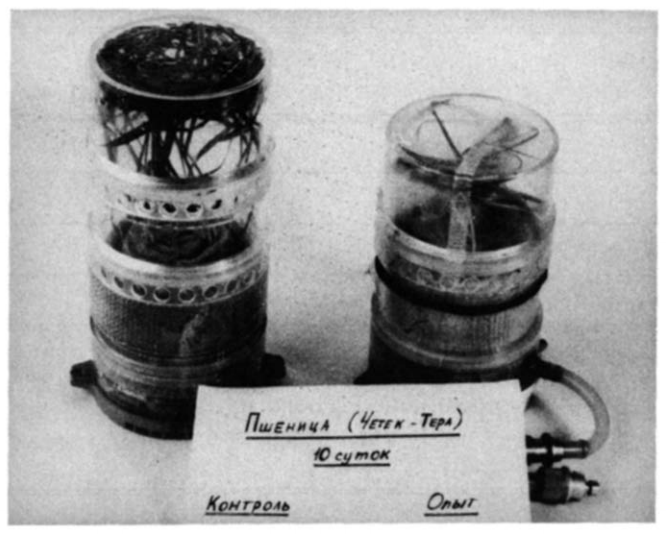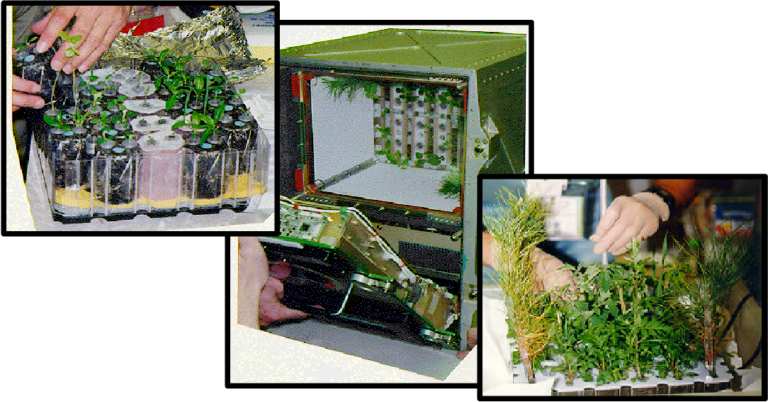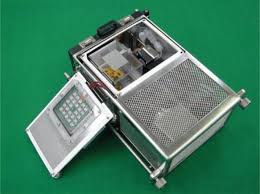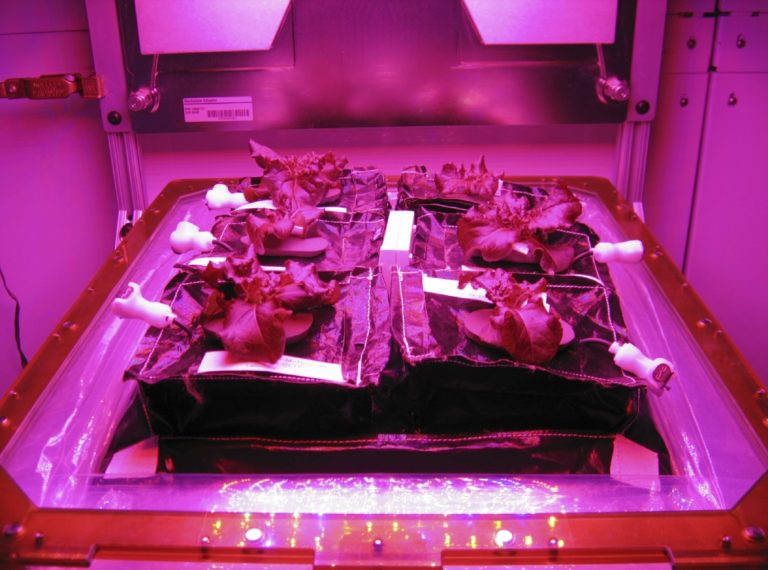
It’s fairly common knowledge: where you grow a plant makes all the difference. Botanists, gardeners, and farmers alike have worked for thousands of years to perfect plant growth in any environment. From the fields of the Midwestern United States to the arid climate of the Middle East, humans will grow plants wherever they’re needed. And as technology has only gotten better and better, it’s ushered in a new era of “we can grow plants anywhere“. Timed lighting and watering systems have made indoor gardening a real option for urban environments. Vertical gardening is being discussed to remedy spacing issues. Hydroponics is becoming ever more popular. These are the solutions being created to address the challenge of -growing plants anywhere we damn well please- and solidifying our status as the true masters of plant science. But, for an even greater challenge, we look no further than our solar system. The real question is: can we grow plants in space? What tools will be used to grow our plants in space?
These are the questions that are essential for astrobotany (the study of plants in space) research. They are the questions that academic botanists ask themselves daily, and they are questions that may have crossed your mind as well. While astrobotany is generally considered to be a younger discipline, its history is richer than one might expect. For as long as we’ve had dreams of space travel, we’ve recognized the need for our plants. And as long as we’ve tried to grow plants in space, we’ve needed a place to grow them.
Here is a brief history of plant habitats in space.
1946: Inside V-2 Rockets

Using the term very loosely, the first “space plant habitat” could technically be considered V-2 rockets. No actual plant growth occurred in 1946 when NASA launched maize seeds on repurposed V-2 rockets, but this is the first time plant material was ever subject to spaceflight. A true plant habitat? Maybe not so much. The first attempt at spaceflight plant biology? Yes, very much so.
1971: Oasis Series Growth Chambers

The Soviet Oasis series marked the first biological life support flight experiments, flying from 1971 to 1986. These Oasis chambers were beneficial to astronauts’ mental health, with British astronaut Mike Foale commenting on how encouraging it was to see his seedlings sprout. One cosmonaut even placed his sleeping bag next to an Oasis, so he could check plant growth as soon as he awoke. Cosmonaut Yuri Artyukhin described how the Oasis was the brightest place on the station, so crew members spent considerable time near it. There were four iterations of Oasis.
1973: Unnamed Plant Growth Compartment on Skylab

One of the oldest spaceflight plant biology experiments was a student project and collaboration with NASA. A true feat of engineering, and one of the oldest space stations, “Skylab” was a modified Saturn V rocket in which early spaceflight research was performed. Among them is the growth of rice in their plant growth chamber. Here is a description of the chamber from NASA experiment archives.
“The growth container for this experiment consisted of eight compartments arranged in two parallel rows of four. The growth container was similar to cardboard potting cartridges found at plant nurseries. Each compartment had two windowed surfaces, which allowed periodic photography of the developing seedlings from both a front and side view. The study of light intensities on plants was accomplished by using light filters. For this purpose, five windows were covered with special filters with different degrees of light transmittance, two windows were blocked to prevent any light from reaching the seeds, and the remaining window had no filter, allowing 100 percent transmission of light. Three rice seeds were inserted into each compartment through covered holes. Twenty-four seeds were inserted into a nutrient agar medium with the aid of an automatic seed planter. Photographs were taken at regular intervals for 30 days.” – Plant Growth/Plant Phototropism (ED61_62)
This pioneering experiment addressed one of the major variables that influence plant growth: lighting. As early as 1973, plant space habitats already included light filters, nutrient agar, and an automatic seed planter.
1973: Vazon
In 1979, cosmonauts received a very special gift: a Vazon growth chamber with a kalanchoe plant inside. They were so pleased with this plant that they named it “life tree”. Although it was used for a variety of plant species, the Vazon was initially designed to grow bulbous plants in space, like onions and tulips. The Vazon first flew to Salyut 6 in 1973 and continued to support plant research on Salyut 7 and the Mir space station. Although the Vazon was a successor to the Oasis series growth chambers, it was simpler in many ways. It had no lighting system or environmental controls and instead relied on light and air from the space station cabin. Learn more here!
1973: Malachite

Orchid flowers can seem otherworldly, but did you know that the Soviet Space Program once sent blooming orchids into orbit?! Epidendrum orchids were cultivated in Malachite, a small growth chamber flown on Salyut 6 for 110 days. This 1973 orchid experiment was designed to investigate the psychological comfort that cosmonauts felt when interacting with plants. The orchids were launched in bloom, but unfortunately, the flowers immediately fell off the stems. These orchids produced no additional flowers in orbit, so no seeds resulted from this experiment. At that time Malachite was one of the largest plant growth chambers ever sent to space, and although its orchid experiment was largely unsuccessful, it paved the way for even larger growth chambers that were yet to come. Learn more here!
1982: Svetoblok

Svetoblok was the first airtight, sterile growth chamber for spaceflight, and its experiments helped us understand that plants can develop flowers in space. This chamber was compact, with a small removable cylinder that could be returned to Earth independently from the chamber. To return the plants to Earth, cosmonauts simply held the removable cylinder in their laps on the trip down! Svetoblok was first flown in 1982 and was used on both the Salyut and the Mir space stations. Svetoblok’s sterile environment was believed to be a big reason for its success. In 1982 cosmonauts successfully grew the first flowers in space from Arabidopsis thaliana, a tiny species used commonly in research. Although these flowers bloomed and began to develop fruit the male and female organs degenerated, so no viable seeds were produced. The success of flowering in Svetoblok demonstrated that the seed-to-seed life cycle should be possible in microgravity, given the right environmental conditions. Svetoblok was one of the key growth chambers that laid the groundwork for plant reproduction in space. Learn more here!
1982: Phyton/Fiton on Салют-7 (Salyut 7)

Phyton (occasionally called Fiton) was designed to support seed-to-seed experiments, to demonstrate that plants can reproduce normally in space. Phyton was successful: it produced the first space-grown seeds, achieving what we call ontogenesis (seed-to-seed growth) with Arabidopsis. It grew plants inside glass cylinders with nutrient agar, had a powerful lamp, and used an air filter to remove air contaminants. It even included an automatic apparatus that could plant seeds in orbit! Python was also highly adaptable: scientists could adjust individual cylinders, so they could test different light treatments, water quantities, plant species, and nutrient solutions. Phyton was developed by the Ukrainian Institute of Molecular Biology and ran flight experiments on Salyut 6 and Salyut 7. There were three iterations of Phyton.
The literature also states that there was a centrifuge aboard Salyut 7. Lettuce was examined under 0.01, 0.1, and 1 g conditions using this equipment.
Note: Quick searches of Soviet-era space equipment often yield few results. This could be a consequence of strict science rules imposed upon Russian scientists to prevent American technology theft during the Cold War. During this time, many researchers were forbidden to release detailed papers about their experiments.
1982: Plant Growth Unit (PGU)
For 15 years, the Plant Growth Unit (PGU) was a highly successful platform for shuttle-era astrobotany experiments (1982-97). The PGU was the first American platform to run regular flight experiments on biological life support systems, and its experiments examined seedling growth, lignification, and reproduction. The PGU was designed and built by Lockheed Missiles and Space Company for the Ames Research Center and was eventually upgraded into its successor, the Plant Growth Facility (PGF). Learn more here!
1990: "SVET" on Мир (Mir)

The plant habitat SVET (Russian: light) was installed in 1990 aboard the spacecraft Mir. SVET was located in the Kristall module of Mir and consisted of 4 basic units:
- the plant growth chamber itself
- the root module
- the light and control unit
- the GEMS (Gas Exchange Measurement System)
Plant varieties such as dwarf wheat and Brassica rapa were grown in SVET, with important variables being controlled and measured using this equipment. Substrate moisture was one of those being studied.
1997: Plant Growth Facility (PGF)

For years, the Plant Growth Unit (PGU) was the best plant growth chamber for studying tiny plants in space. Yet, scientists and engineers found numerous ways to upgrade the PGU, enhancing many pieces of equipment while maintaining the same dimensions, and they called this upgraded version the Plant Growth Facility (PGF). This system had a much higher-output lighting system, could accommodate experiment-specific growth media, and was capable of controlling humidity, temperature, and CO2 concentration. Like the PGU, the PGF was a platform for plant reproduction experiments, and it helped demonstrate how ventilation and extra CO2 are needed for seeds to develop normally in space. In 1997 the PGF flew on the shuttle for 15 days to test the effects of microgravity on plant growth for the Collaborative Ukraine Experiment (CUE). Learn more here!
2002: Biomass Production Chamber (BPS)

The Biomass Production System (BPS) was developed by Orbital Technologies Corporation in partnership with NASA engineers and scientists. It was initially designed for the Shuttle and SpaceHab but was later modified to fit in the International Space Station (ISS), and it contained two experiments on the ISS in 2002 during Expedition 4. The first experiment was a Technology Validation Test (TVT), where the BPS validated several subsystems and technologies that were later used to design the Plant Research Unit (PRU). The second experiment was called Photosynthesis Experiment and System Testing and Operation (PESTO). The PESTO demonstrated that plant productivity (photosynthetic rate, transpiration rate, and biomass) does not differ from ground controls. From this experiment, scientists learned that gas exchange is not directly affected by microgravity, but is affected indirectly by the lack of gravity-driven convection in microgravity. Learn more here!
2002: Lada Plant Growth System

Lada, named for the Slavic Goddess of Fertility, is the oldest greenhouse system on the International Space Station. Lada is a traditional spaceflight plant habitat with two different growth compartments for growth comparison. Its design and technology are modeled after its predecessor “SVET” on Mir.
“Lada consists of four major components (a control module, two vegetation modules and a water tank) and is designed to be deployed on a cabin wall. This deployment scheme was chosen to provide the crew therapeutic viewing and easy access to the plants. The two independently controlled vegetation modules allow comparisons between two vegetation or substrate treatments. The vegetation modules consist of three sub-modules, a light bank, the leaf chamber, and a root module.”
– Lada: The ISS Plant Substrate Microgravity Testbed [accessed May 27 2018]
2002: Plant Generic Bioprocessing Apparatus (PGBA)

The Plant Generic Bioprocessing Apparatus (PGBA) was a plant growth habitat on the International Space Station. Plants grown on the PGBA include Arabidopsis thaliana, wheat, tomatoes, loblolly pine, spinach, periwinkle, white clover, pepper, sage, and purple coneflower.
2006: European Modular Cultivation System (EMCS)

The European Modular Cultivation System (EMCS) was built for plant research, but could also hold experiments on small animals (insects and small invertebrates). It was funded by the European Space Agency (ESA) and was developed by an industrial team led by the German company EADS-ST Friedrichshafen. Specialists at NASA’s Ames Research Center optimized it for certain experiments by developing experiment-unique hardware. It was installed on the ISS in the US Destiny module (2006-08), and the European Columbus module (2008). The EMCS hosted a wide variety of plant experiments that helped scientists understand imaging systems, plant movement, plant membrane proteomes, plant growth and development, cell-wall genetics, and plant tropisms in space. Learn more here!
2009: Plant Experimental Unit (PEU)

The Japanese Plant Experimental Unit (PEU) was designed for the Space Seed experiment, to test the seed-to-seed life cycle of Arabidopsis in microgravity. Eight units were launched to the ISS in 2009 and were mounted in the Cell Biology Experiment Facility (CBEF) inside the Kibo laboratory for 62 days. Arabidopsis is a very small plant, so each PEU was also quite small: the growth area of one PEU was only 4.8 cm tall, 5.6 cm wide, and 4.6 cm deep. Learn more here!
2011: SIMBOX

The Science in Microgravity Box (SIMBOX) is scientific hardware developed by DLR (German Aerospace) in cooperation with CMSEO (China Manned Space Engineering Office). SIMBOX was flown on a Shenzhou 8 mission in 2011 and contained biological experiments including a study on Arabidopsis with 1g centrifugal control for Arabidopsis in SIMBOX (onboard Shenzhou). SIMBOX has an RNAlater injection system, lights, temperature control, and a centrifuge.
2014: VEGGIE on the International Space Station

The VEGGIE vegetable production unit was developed by Sierra Nevada subsidiary ORBITEC and installed on the ISS in 2014. There are currently two VEGGIE modules on the ISS. Plants are grown with root mats and ‘plant pillows’, which are small, wicked pillows that contained calcined clay and fertilizer for the plants to grow in. The lights on VEGGIE are primarily red and blue light, which are LEDS optimized for plant growth because they have the highest energy wavelengths. Airflow and pressure are also controlled in each of the VEGGIE systems. Below, NASA describes the process of beginning a plant experiment in the growth compartment.
“Wearing sunglasses, Swanson activated the red, blue and green LED lights inside Veggie on May 8. A root mat and six plant “pillows,” each containing ‘Outredgeous’ red romaine lettuce seeds, were inserted into the chamber. The pillows received about 100 milliliters of water each to initiate plant growth. The clear, pleated bellows surrounding Veggie were expanded and attached to the top of the unit.” – NASA KSC 05/16/14
Summary
The timeline of plant habitats for space has ebbed and flowed with the construction and maintenance of space stations, research vessels, and spacecraft. Plant biologists involved with these projects have largely (and rightly) stuck to their wheelhouse. Control over as many variables as possible is key to the development of these plant habitats. This is a common thread amongst all the discussed equipment above. Airflow, pressure, watering, nutrients, and light are all closely controlled and monitored. In addition to this, sterilization from start to finish as a plant goes through its life cycle is essential. Contamination could jeopardize important data. These are concepts realized and practiced as early as the 70s and they are continued to this day.
This overview of important plant habitats left out hardware such as BRIC (Biological Research In Canisters) as this was less a “greenhouse”, but more a petri-dish, or biological organism related. Smaller research tools have less specificity when it comes to growing plants, but yield equally important data when it comes to astrobotany research.
There is still much to learn when it comes to our endeavors in space agriculture. Despite a history spanning nearly six decades, the world’s space programs still have yet to produce the first bioregenerative life support system. As our rocket technology advances, our biological sciences must keep up. We must push for the development of more and more advanced plant habitats. To further our space legacy, we will continue to learn, continue to build, and continue to grow plants in space.
Let’s grow plants in space.
